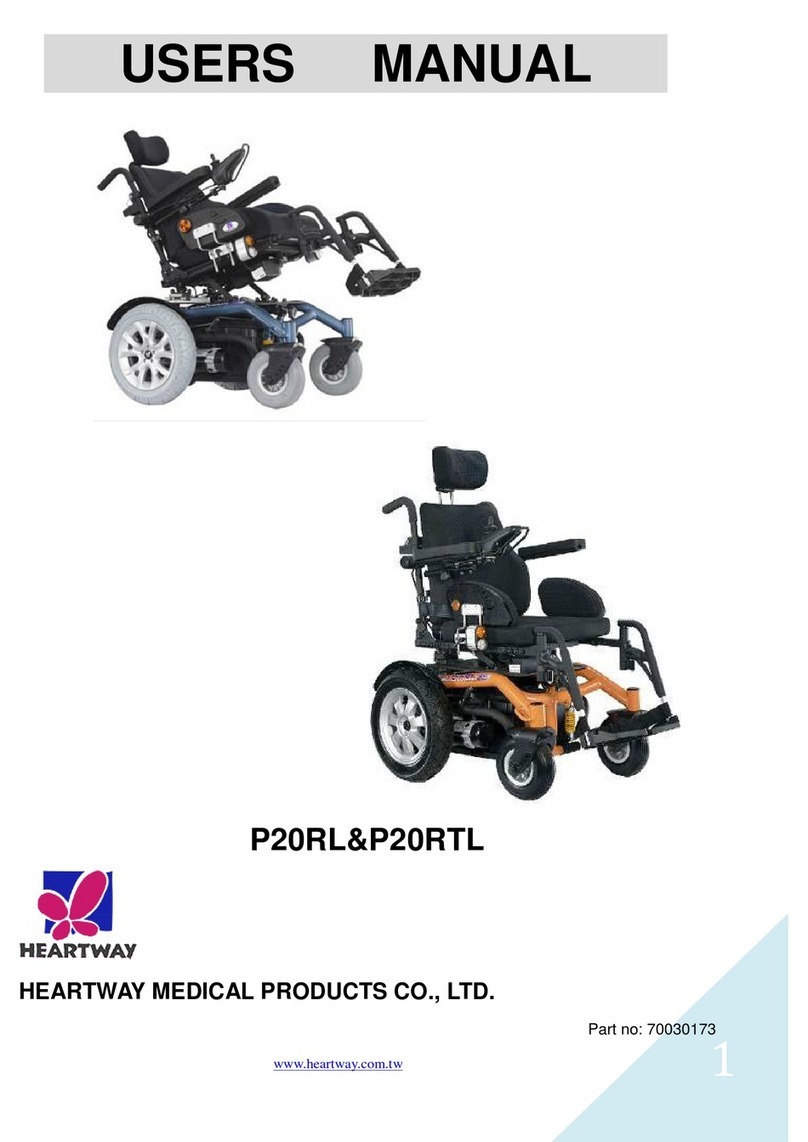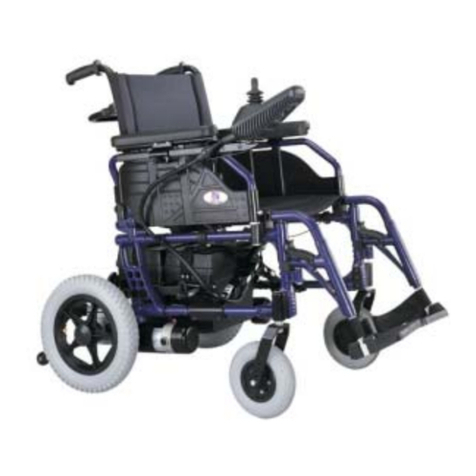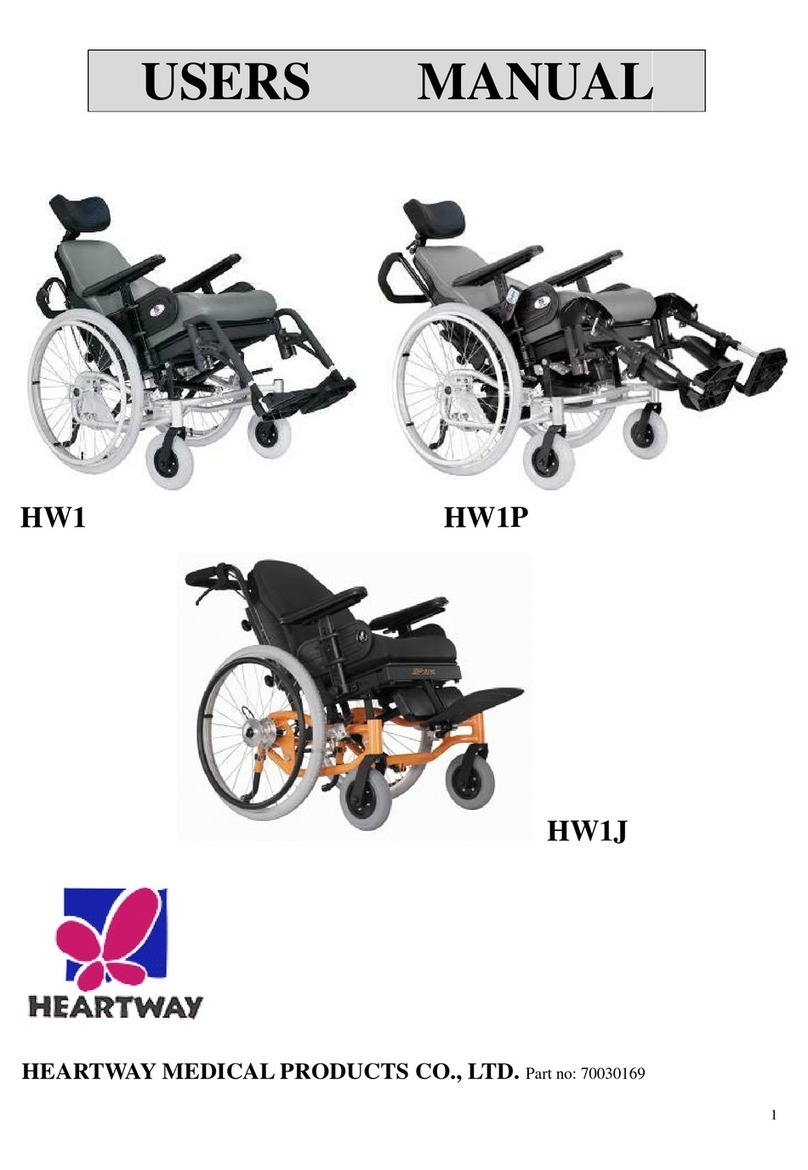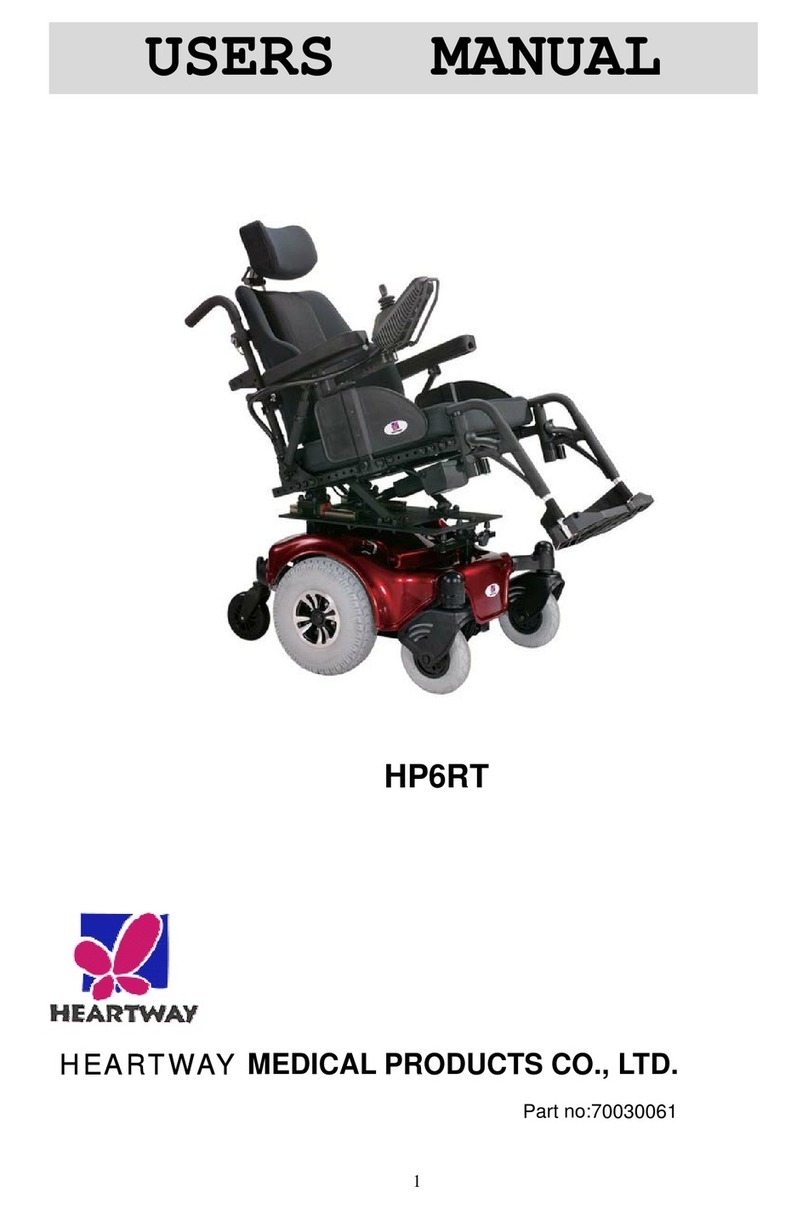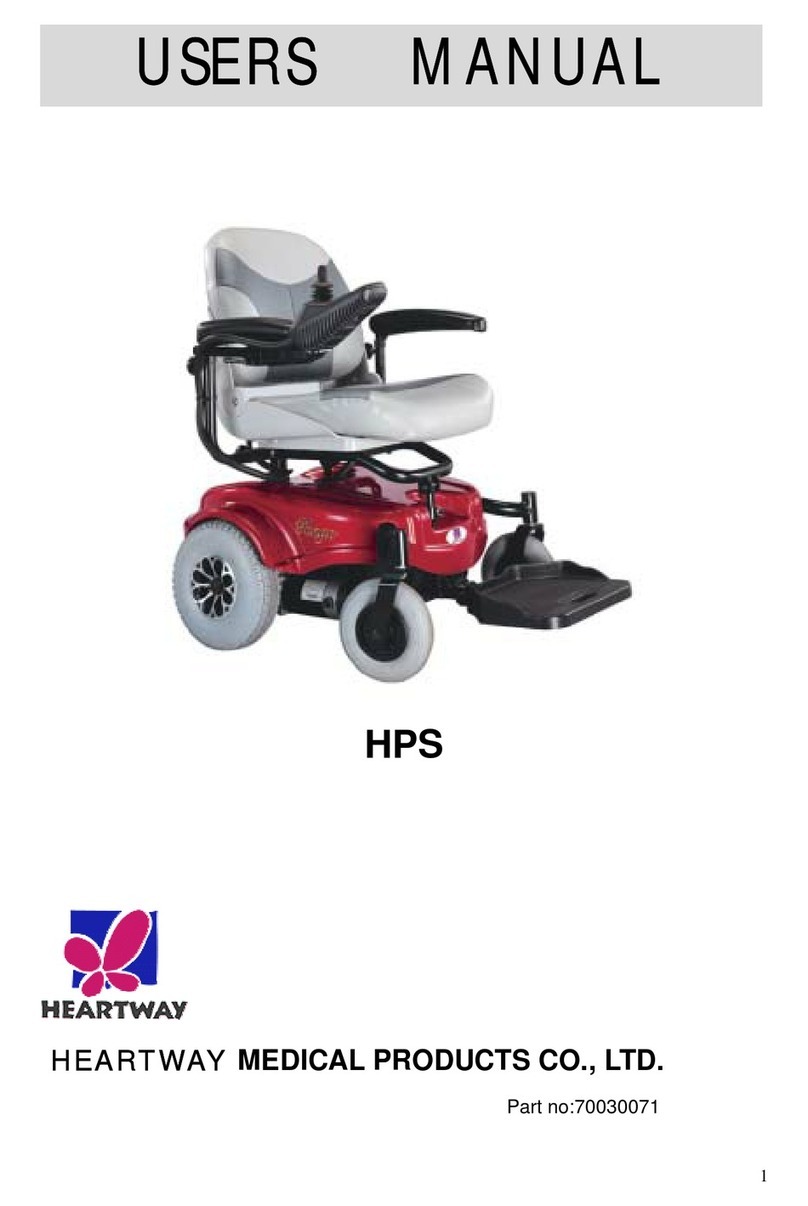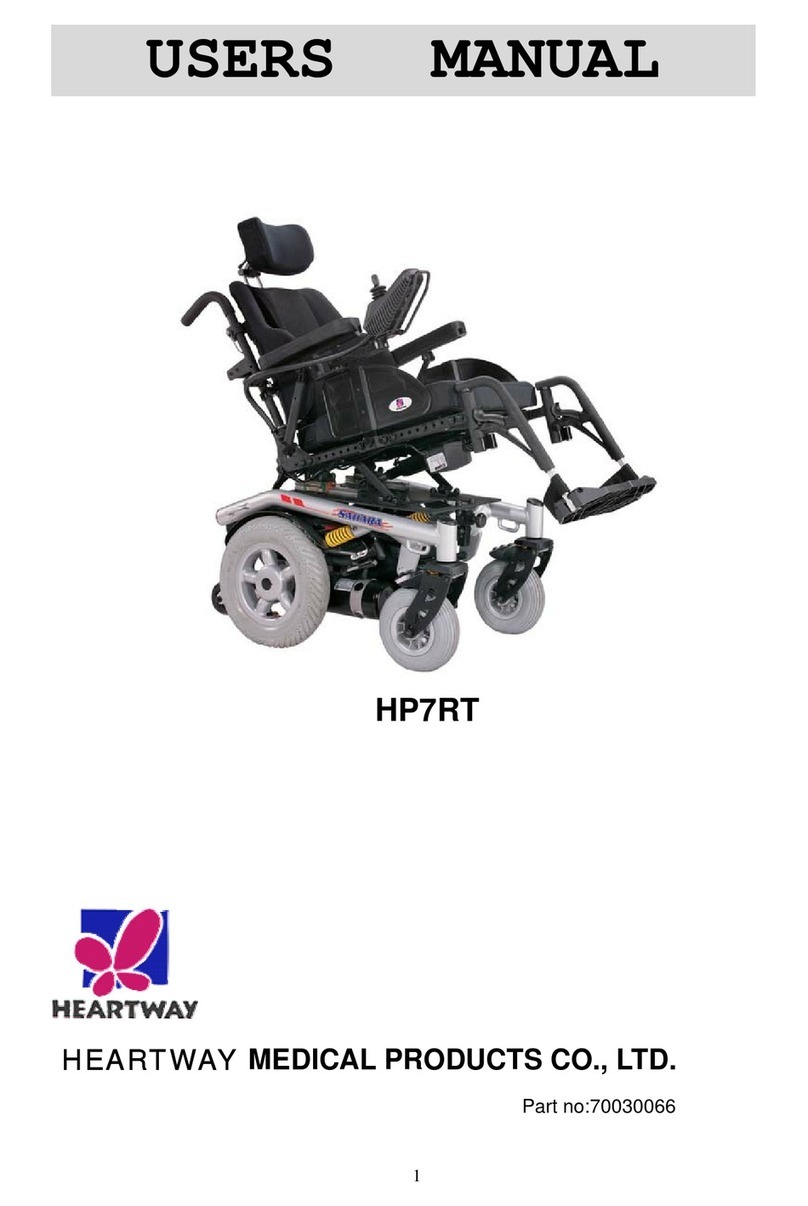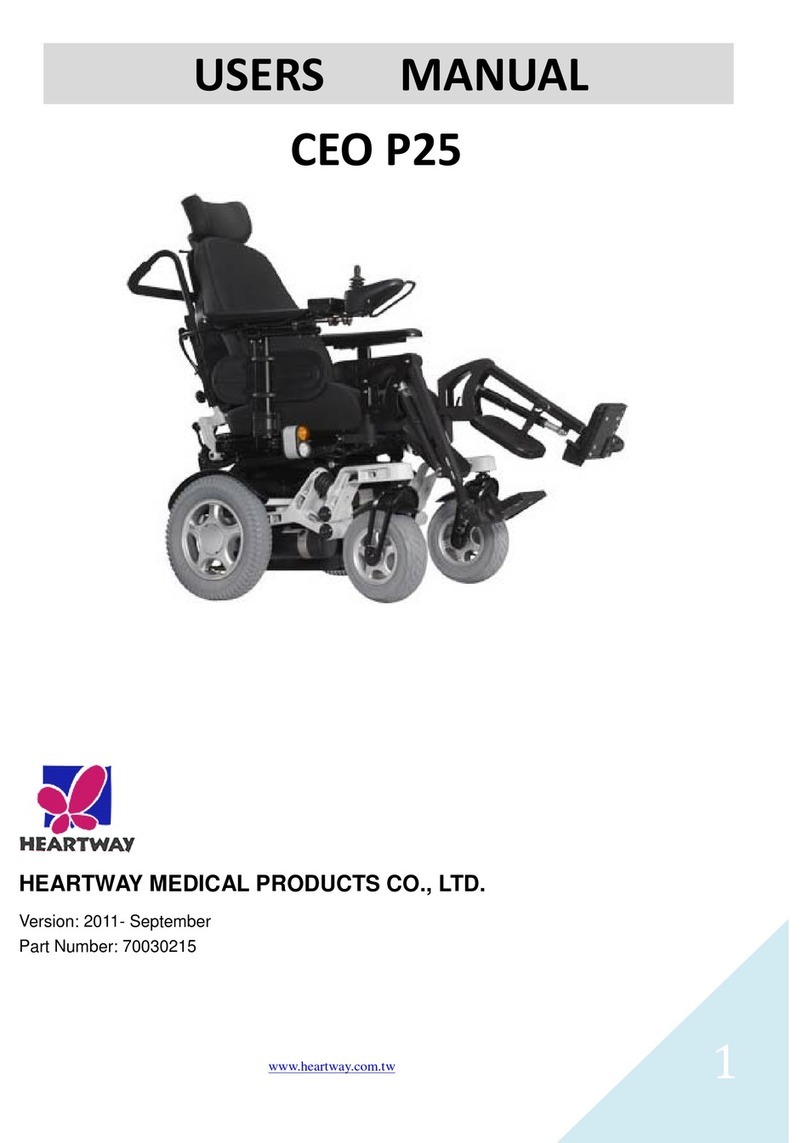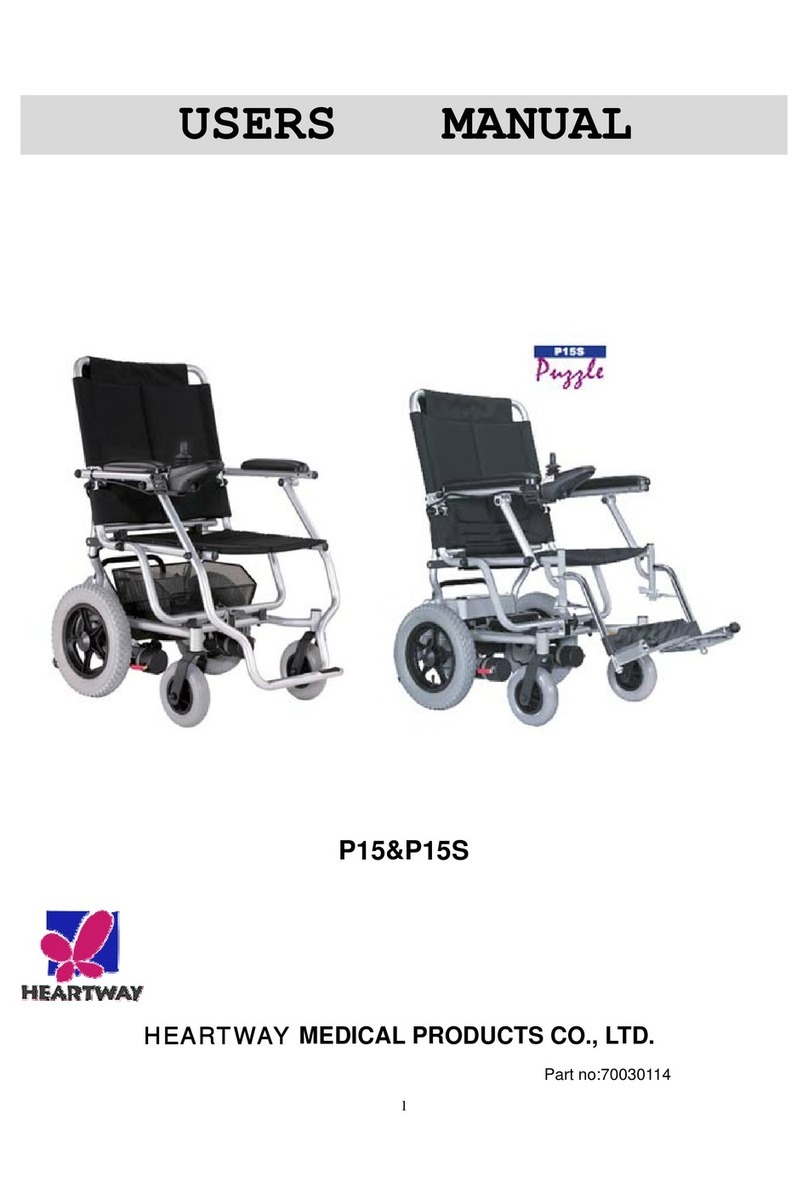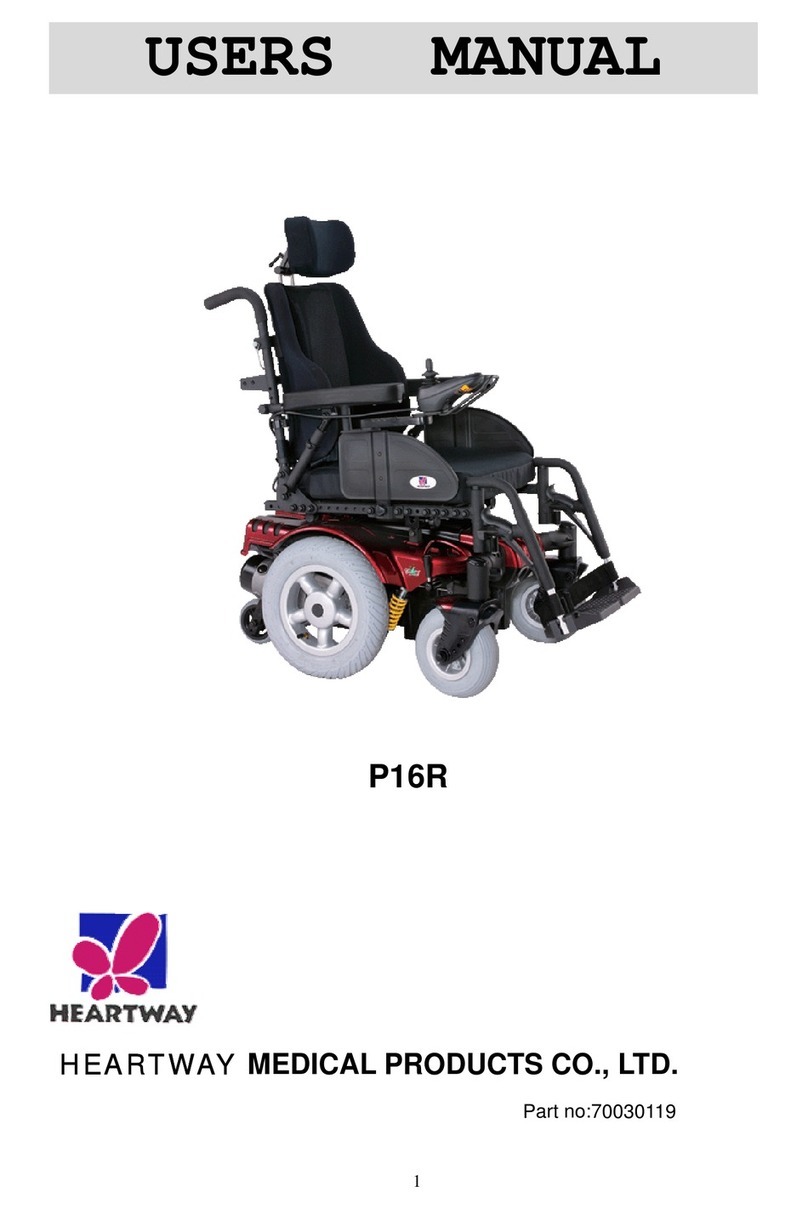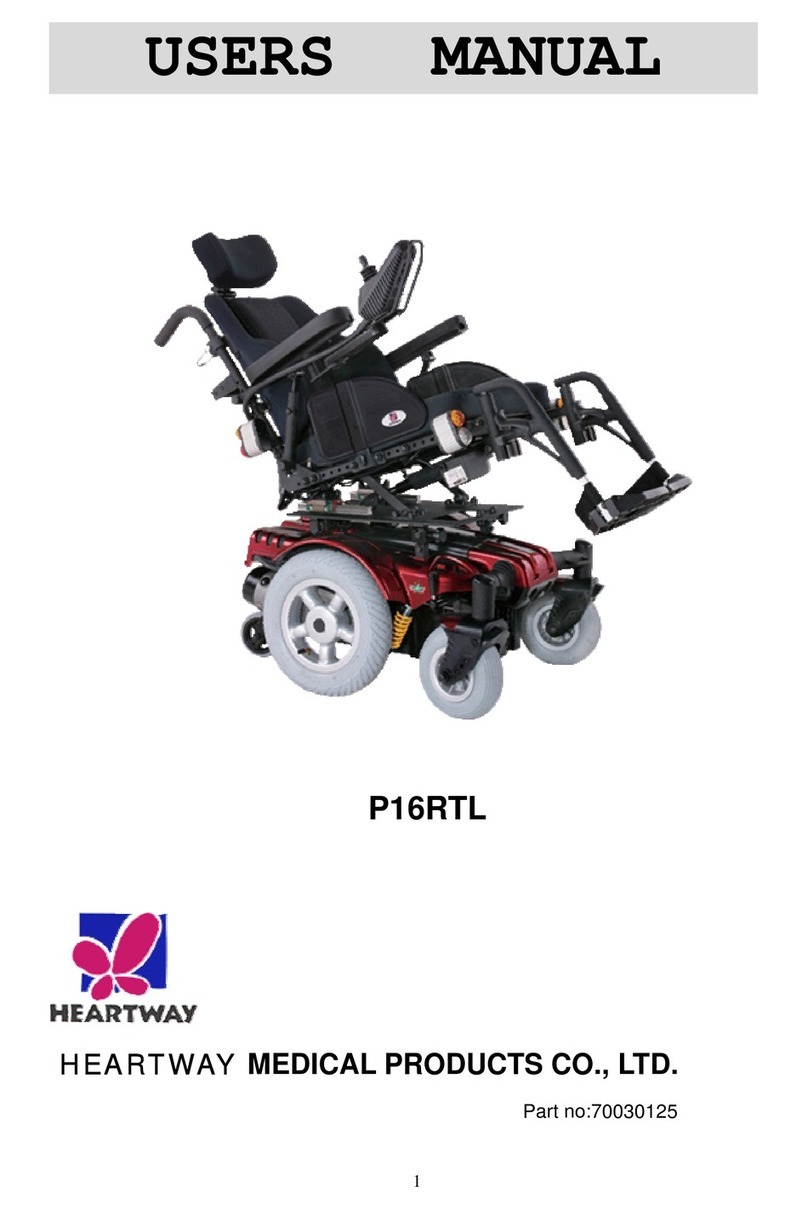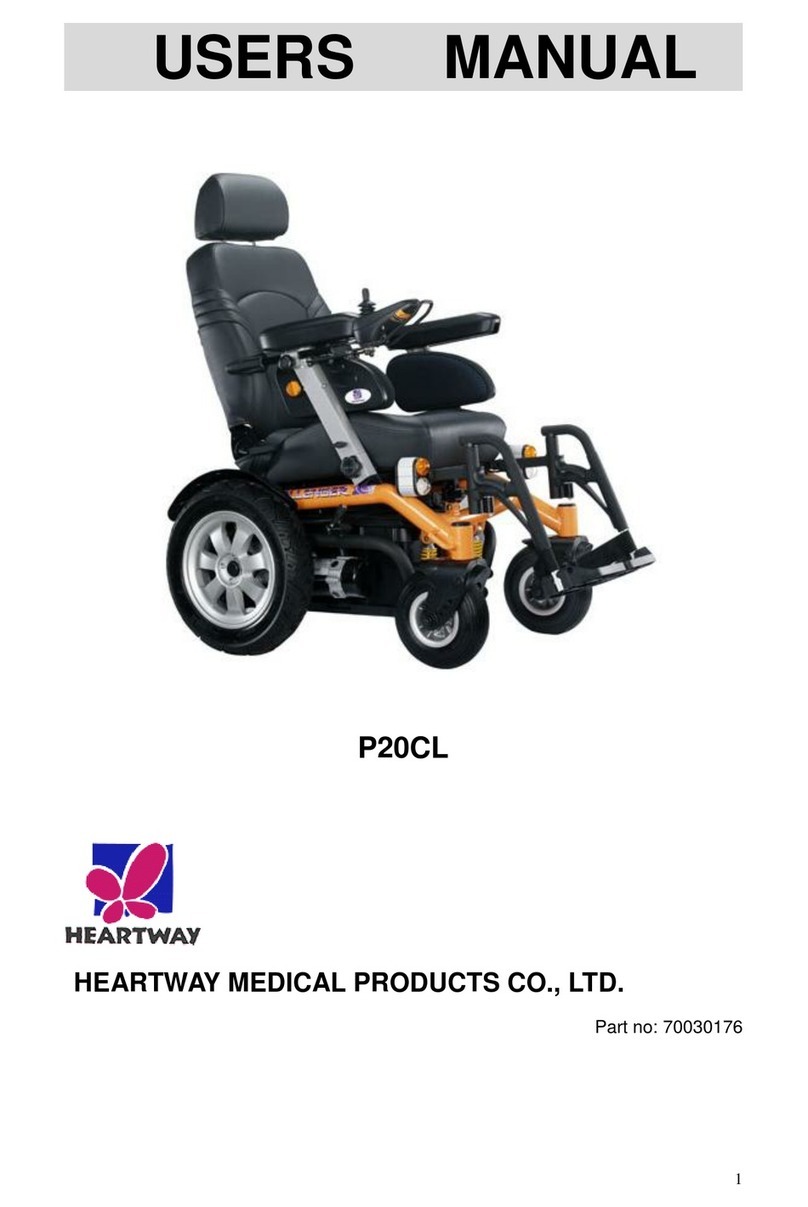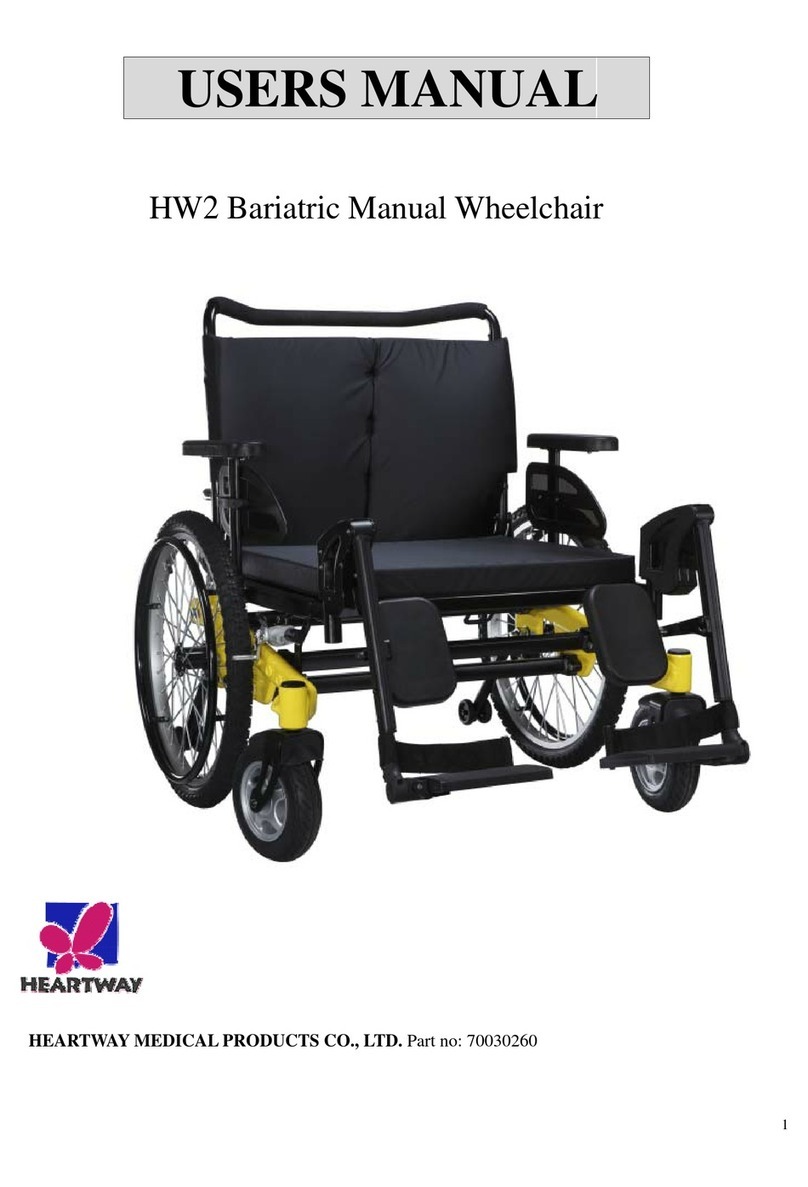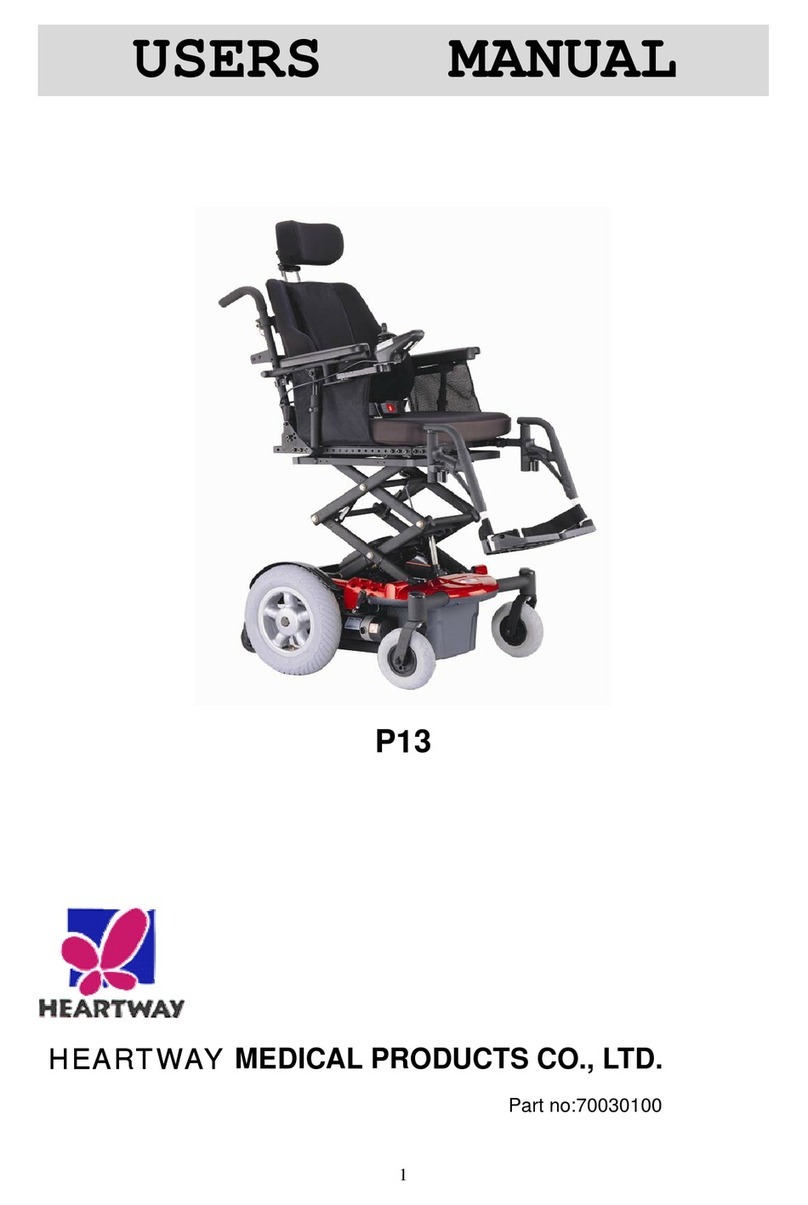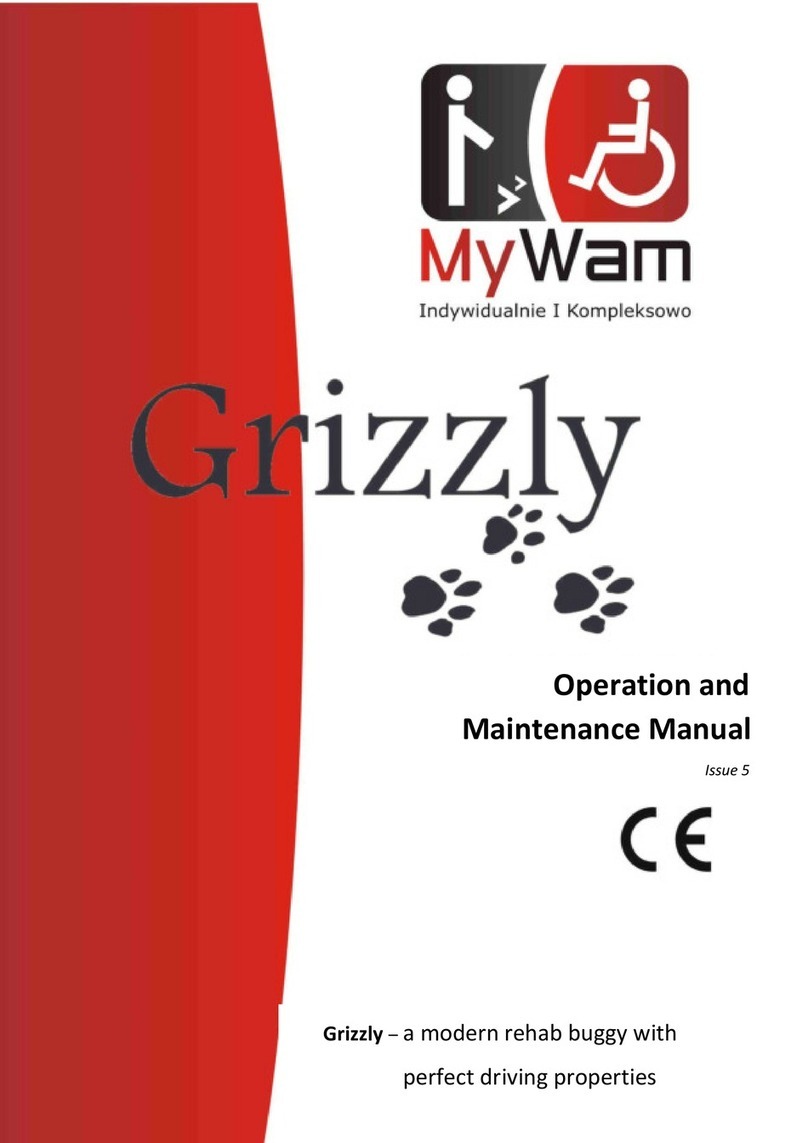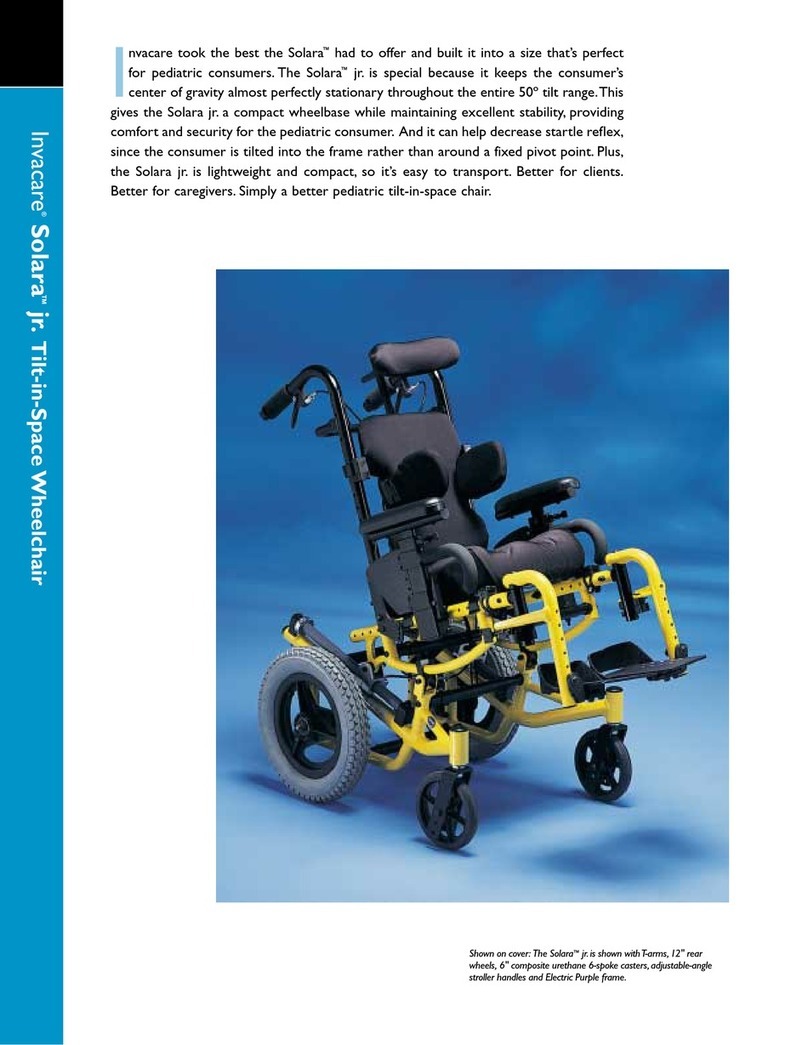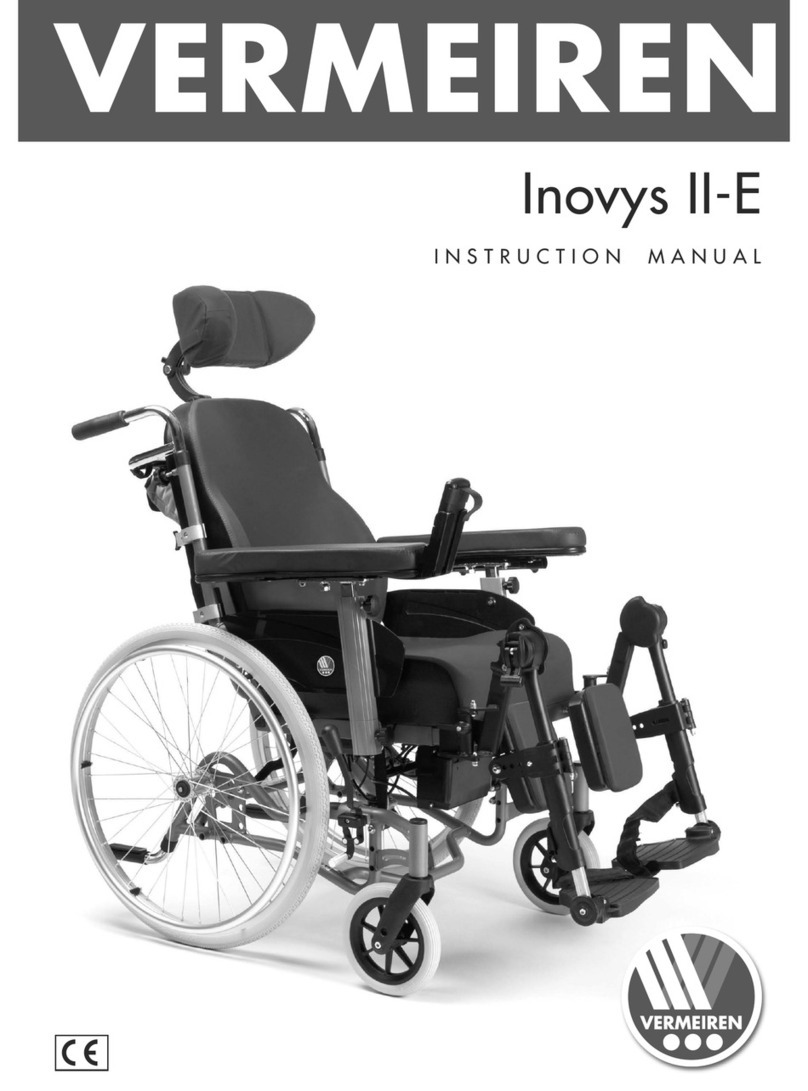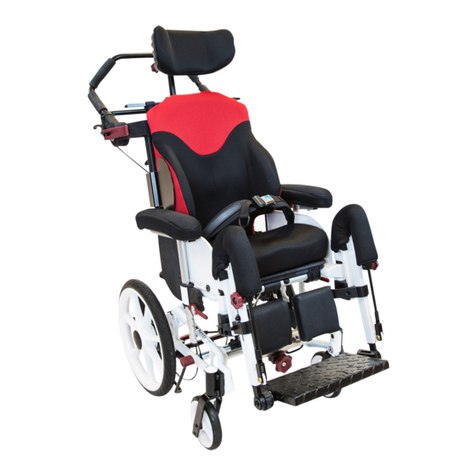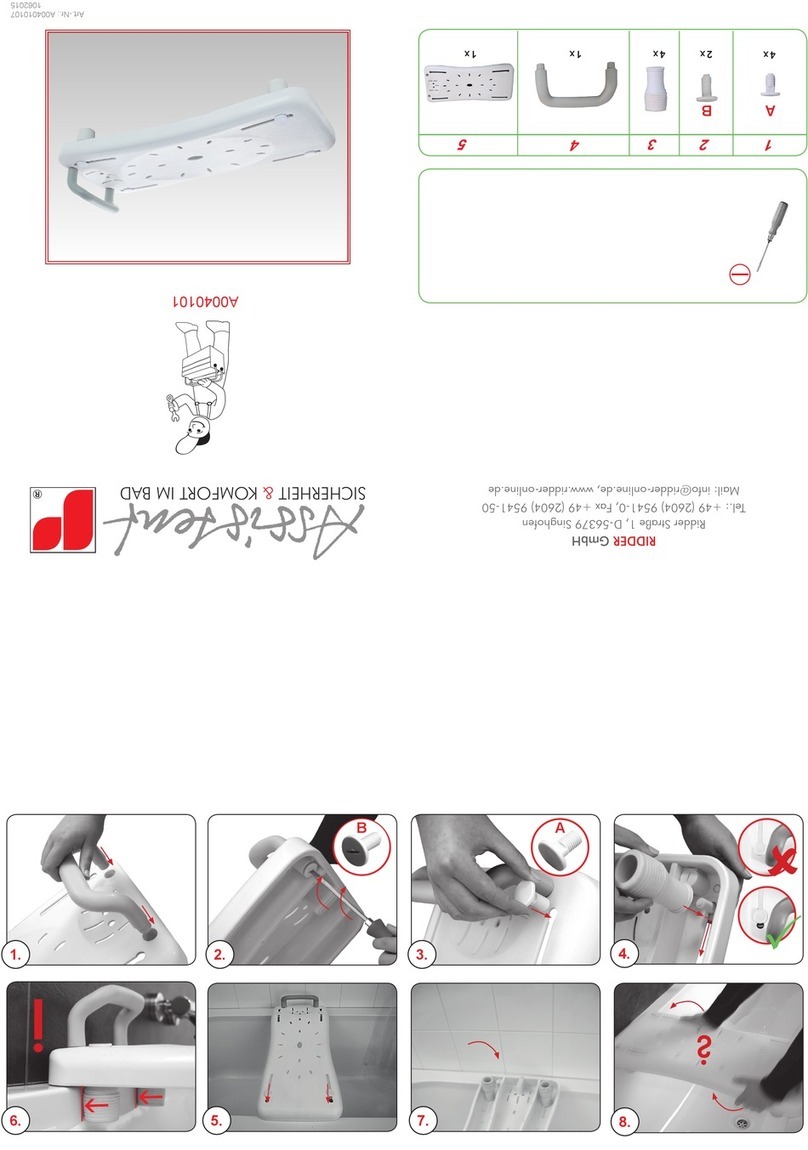4
understanding these instructions. If you are unable to understand the warnings, cautions or instructions,
contact a healthcare professional, the dealers or technical supports before attempting to use this
equipment, otherwise, injury or damage may occur.
12. There are certain situations, including some medical conditions, where the scooter user will need to
practice operating the scooter in the presence of a trained attendant. A trained attendant can be defined
as a family member or care professional especially trained in assisting a scooter user in various daily
living activities. Consult with your physician if you are taking any medication that may affect your ability
to operate your scooter safely.
13. Do not attempt to lift or move a power scooter by any of its removable parts including the armrests,
seats or shrouds. Personal injury and damage to the power chair may result.
14. Never try to use your scooter beyond its limitations as described in this manual.
15. Please do not sit on your scooter while it is in a moving vehicle.
16. Keep your hands away from the wheels (tires) while driving scooters. Be aware that loose fitting clothing
can become caught in the drive tires.
17. Consult your physician if you are taking prescribed medication or if you have any certain physical
limitations. Some medications and limitations may impair your ability to operate scooters in a safe
manner.
18. Be aware when the drive mode is unlocked or locked.
19. Don’t remove anti-tipper if there is any-tipper equipped with the scooter.
20. Contact with tools can cause electrical shock and do not connect an extension cord to the AC/DC
converter or the battery charger.
21. Do not attempt to lift or move your scooter by any of its removal parts, such as the armrests, seats, or
shroud.
22. When climbing an incline, don’t drive at an angle up the face of the incline. Drive your scooter straight up
the incline. This greatly reduces the possibility of a tip or a fall.
23. Don’t climb a slope steeper than the scooter’s limitation.
24. Don’t attempt to have your scooter proceed backward down any step, curb or other obstacle. This may
cause the scooter to fall or tip.
25. Always reduce your speed and maintain a stable center of gravity when cornering sharply. Don’t corner
sharply when driving scooters at higher speeds.
26. Operating in rain, snow, salt, mist conditions and on icy or slippery surfaces may have an adverse affect
on the electrical system.
27. Never sit on your scooter when it is being used in connection with any type of lift or elevation product.
Your scooter is not designed with such use in mind and any damage or injury incurred from such use is
not the responsibility of Heartway.
28. Surfaces of the power wheelchair that can come into direct contact with the occupant’s skin and/or
assistant’s skin during normal use and that are within occupant reach shall not exceed 41 °C. The motor
surface can reach temperatures greater than 41°C after driving. Do not touch these parts when
disassembling the scooter or wait until the motor is cooled down.
29. The programming of the controller shall only be carried out by personnel, which is authorized by his
manufacturer. A wrong programming can result in safety hazards for the occupant!
30. If the power scooter is switched off while driving on the horizontal at maximum speed at 7 km/h, it will
come to a stop with the maximum stopping distance of 1.2 m. Please consider this distance when driving.
31. Drive-wheel needs to be switched to engaged-mode while transporting the power scooter with a car or
airplane.
25. Surface temperatures can increase when exposed to external sources of heat.
Modifications
Heartway Medical Product has designed and engineered power wheelchair to provide maximum utility.
However, under no circumstances should you modify, add, remove, or disable any part or function of your
power wheelchair. Do not modify your P19 in any way not authorized by Heartway Manufacturer.
Unauthorized modifications may result in personal injury and/or damage to your power chairs. Do not use
accessories if they have not been tested or approved for Heartway products. Changing of controller parameter
shall be only performed by authorized technicians due to the safety concern.





















